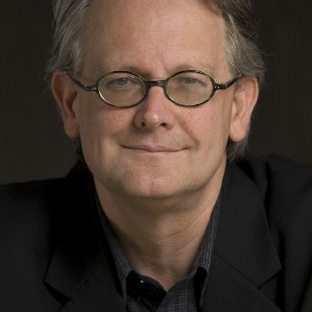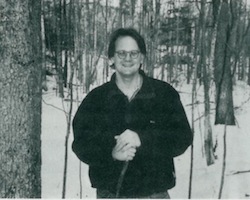
What relationship have you discovered between haiku and meditation? A certain kind of hokum accompanies much of haiku today. People imagine it to be something other than it is in spiritual terms. But haiku is very, very simple. In the same way that you make yourself very simple by following the breath. You clear your mind, let go of everything else. In the same way, writing haiku takes you right to the heart of the moment. That’s the Zen of haiku, really. Being able to let go of everything and enter into this space. Haiku is seventeen syllables long, so it seems very small.
Do you consider haiku to be part of your meditation practice, or is it a practice unto itself? I think it’s a practice unto itself. It’s not a formula that you can just practice and attain the desired results. You have to really throw your heart into it, with no remainder. It’s certainly not scary. It’s just this delightful little poem, really. The haiku mind and the Zen mind are ultimately not different from one another.
Do you have a strict discipline for practicing haiku? I did for many years. From the time of my elementary school days, I walked every day—two or three hours a day. Toward the end of high school, I started combining it with haiku, because I found that I could write haiku while I was on these walks. And so then, for almost twenty years, haiku was the thing I did when I was walking. That was my daily discipline. But I didn’t realize that this was a spiritual practice for a long time, I just did it for its own sake, almost as a hobby. I didn’t take it very seriously until I discovered that when everything else was gone, that was what remained. When I left the monkhood, when my first marriage was gone, when my first teacher had died. When there was nothing left, haiku was there—sort of a treasure that had been there all along and I had not taken it to heart.
You have taught haiku for years, and you have taught meditation. Do you see a similar transformation with students of each? Sometimes I see deeper transformation in my haiku students. The problem is that when people practice meditation—especially since we’re all almost all converts—of necessity that involves, at least in the early years, a sort of neurotic investment of energy. It doesn’t accomplish anything. You sort of overshoot the mark. My haiku students are able to absorb the teaching and find the teaching within themselves, almost without realizing that they have or that it’s coming.
How does haiku do that? It drops you right off at the doorstep [laughs]. You just knock and see for yourself. Sometimes, aiming lower you accomplish more, and haiku is something that, if you like it and practice it as a hobby, you may find that you are doing it all the time. So that this is a meditative awareness training you are engaging in constantly, all day long. How many people can really meditate or follow their breath all day long? How effective is that, really? I don’t know. I tend to think that people often have truer, deeper results when they approach their life or their lifestyle on a realistic level. Haiku does that for a lot of people, I think.
—Mary Talbot
Seeds from a Birch Tree
A haiku ought to make sense literally. It must be understandable right away. The objective image is the flesh and bone of the haiku. Without it there is no poem.
Here is a haiku by Sister Benedicta, an Episcopal nun whom I came to know by chance when my wife noticed her reading a book of haiku on a New York City bus.
inside our chapel
with beings of wood
and stone
seeds from a birch tree
The scene is simple: through the door of he chapel the seeds of a birch tree have blown, scattering across the floor. Above and all around them are the holy figures of a convent chapel, a place of prayer and contemplation.
 The truth of the literal, and its wordless message, is the meaning of the poem. In Christian terms, we might call it incarnation. I do not know whether this understanding is in line with current Episcopal theology, but monastics throughout the world will understand what it means. Likewise, anyone who follows the Way of Haiku long enough will come to appreciate this matter. In Buddhist terms we sometimes express the truth of the literal with expressions such as “This very body is the body of the Buddha,” or by saying “All beings have Buddha nature.” Sometimes we simply say, “Samsara (the world of suffering) is nirvana.”
The truth of the literal, and its wordless message, is the meaning of the poem. In Christian terms, we might call it incarnation. I do not know whether this understanding is in line with current Episcopal theology, but monastics throughout the world will understand what it means. Likewise, anyone who follows the Way of Haiku long enough will come to appreciate this matter. In Buddhist terms we sometimes express the truth of the literal with expressions such as “This very body is the body of the Buddha,” or by saying “All beings have Buddha nature.” Sometimes we simply say, “Samsara (the world of suffering) is nirvana.”
When I had known my teacher, a Japanese Zen master, for some years, the time came for him to give me a Buddhist name. When the moment came, however, he only laughed and said “Kuraku,” which was what he always called me anyway, being Japanese and unable to pronounce my name in English. In a strange sort of way it seemed appropriate that my name had not changed, and so I nodded, feeling pleased. But when he continued to laugh, I wasn’t sure. “You see,” he said, “it really is the perfect name for you.” Until that moment it hadn’t occured to me to ask what, if anything, it meant in Japanese. When I asked, he replied, “suffering and joy.”
Later that year, when I went to live in the monastery, I found the name less fortuitous than before. At odd moments during the day, always in the presence of others, my teacher would shout “Kuraku!” and then ask, “Which are you now, Ku or Raku?” And I would answer one or the other, or both, or neither, and each time he and all the others would laugh. There were times when I simply went back to my room and cried.
This sort of hazing continued for only a short time, but the matter came up again. One day after I had been living at the monastery for a while, my teacher said that he thought he must have translated the name wrong after all. Actually, it meant “samsara and nirvana.” Still later he retranslated it to mean “sometimes samsara, sometimes nirvana.” Then, finally, some years later, as we were having tea, he said, “You know by now, of course, that your name means only this: samsara is nirvana.”
Like the name Kuraku, there are many ways of expressing the truth of incarnation, but in haiku we always say it in the ordinary way. Something like “seeds from a birch tree.” They also are beings. Their lightness and beauty fill the poem. And yet, the real beauty—and the thing that makes it haiku—is that the seeds remain merely seeds. They are not symbols, or a metaphor for something else. We may say “incarnation,” but really that is only birch seeds. They are beings too. Artists, poets, monks, and nuns—anyone who spends a lot of time in contemplation—will understand this point. It is nothing esoteric—the seeds are not something else. Just as they are, they are holy.
Reprinted from Seeds from a Birch Tree: Writing Haiku and the Spiritual Journey. Copyright Clark Strand. To be published in July by Hyperion.